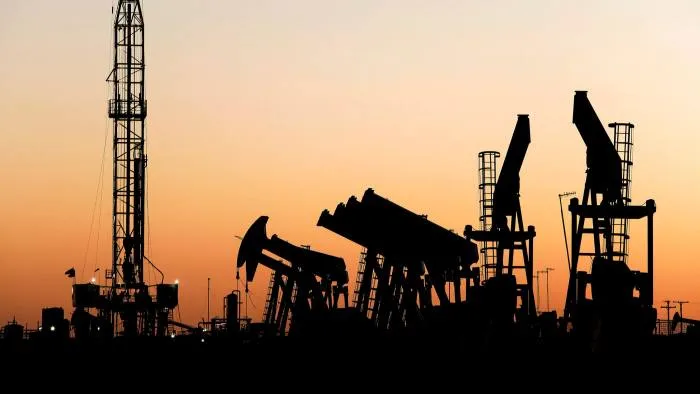
The oil sector was hit harder than almost any other by the pandemic.
Crude prices fell from near $70 a barrel at the beginning of the year to below $20 in April as lockdowns slashed fuel demand. Prices even briefly turned negative in the US.
After a short but highly damaging price war, Opec and Russia enacted record supply cuts to stabilise the market. But even then, companies were forced to rip up investment plans while European energy majors started to look to a greener future.

As the industry’s turbulent year draws to a close there are, however, signs of a nascent recovery. Crude has crept back to $50 and some investors are betting that the oil cycle is turning, even as expectations of peak demand loom over the horizon.
Here are the five things to watch in 2021:
Oil demand
Average oil demand will probably rise by the most on record in 2021. But that is essentially where the good news on consumption ends for oil bulls, with demand expected to be well below pre-pandemic levels.
The International Energy Agency projects consumption will rise by almost 6m barrels a day in 2021 but will average just 96.9m b/d — still well below the pre-pandemic record of 100m b/d in 2019.
Oil demand was also originally forecast to expand by about 1m b/d in 2020 and 2021. That means consumption in 2021 should be at least 5m b/d below where it would have been without coronavirus. In 2009 — as the world economy was slammed by the financial crisis — oil demand fell by just over 1m b/d.
Demand losses come from three main strands. The biggest is jet fuel, with air travel expected to remain severely depressed, consuming 2.5m b/d less than before the pandemic.
Gasoline and diesel demand will fare better, but are expected to be restricted in the first half until vaccines are more widely available and will only reach 97-99 per cent of pre-pandemic levels, according to the IEA.
“The next two quarters may not be meaningfully different to now,” said Amrita Sen at Energy Aspects.
The final hit is from the economic fallout, ranging from less demand from manufacturing companies to fewer goods being shipped by sea.
Oil supply
The outlook for oil supply is more complex.
The collapse in prices in 2020 has sucked investment out of the industry while practical issues — such as social distancing on oil rigs — has delayed drilling programmes.
Then there’s the US shale sector. Shale transformed the oil and gas industry and its growth put Opec on the back foot for much of the past five years.
But this relatively expensive source of supply has been hard hit by the crash in prices with US crude output falling from a record 12.3m b/d in 2019 to 11.3m b/d this year, according to the US Energy Information Administration.
Shale has stabilised in the second half of 2020, but the days of gangbuster growth are behind it for now. The EIA sees US supply slipping to 11.1m b/d in 2021.
However, one of the key variables for oil will be how shale and other producers respond if prices rise much above $50 a barrel — a level where most companies can cover their costs.
Globally, the IEA sees production outside of Opec rising by 500,000 b/d next year after falling 2.6m b/d this year.
“Whether oil prices can remain as high and keep these gains is still questionable,” said Bjornar Tonhaugen at Rystad Energy.
Opec and its allies
The mismatch between supply and demand puts a lot of weight on what Opec and allies such as Russia do.
They called off a month-long price war in April and agreed to cut almost 10 per cent of global oil production to rescue the market.
The deal was meant to taper, allowing countries to produce more as demand recovers. But a drawn-out crisis has left them stuck with more than 7m b/d of crude still offline. They are expected to meet again on January 4 to discuss adding back 500,000 b/d.
Tensions have risen within the group as they weigh renewed lockdowns against a desire to rebuild revenues.
The question of long-term demand is a cloud that hangs over the entire expanded Opec+ alliance, which has included Russia and other producers since 2016.
Fears of a renewed price war within the group are weighing on sentiment, analysts at RBC Capital Markets argue.
“Market rebalancing remains heavily dependent upon the output management of Opec+,” RBC said.
Geopolitics
The biggest geopolitical shift in 2021 will probably come early for the oil market, as Donald Trump departs the White House. Mr Trump became heavily involved with Opec decisions, pressuring Saudi Arabia to raise or lower production in return for his support.
President-elect Joe Biden is expected to be less hands-on with the cartel, but he may end up being no less influential. The potential revival of the Iran nuclear deal could result in Tehran adding close to 2m b/d of crude back to the market if US sanctions ease.
Tensions in some of the weaker oil producers, in Africa, Latin America and other regions, will also be closely watched. All have been hard hit by the drop in oil prices, threatening political stability.
Refining
One of the worst sectors of the oil industry in 2020 was refining. Crude was helped by Opec+ group’s supply management, but refiners have fewer levers to pull when demand crashes. That has meant low margins for much of the year.
Permanent plant shutdowns are widely expected to accelerate in 2021, especially in Europe, with consumption patterns shifting east.
If enough plants close, however, that should ultimately boost margins for those left standing.




















